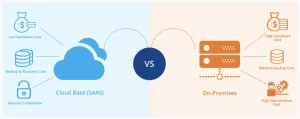You’ve probably heard nightmare stories about someone waking up to find their bank accounts drained or their credit scores ruined. Identity theft can turn everyday routines into a financial and emotional mess. In this article, we’ll discuss how maximum security measures can keep your data out of the wrong hands. We’ll cover definitions, prevention tactics, monitoring strategies, industry standards, and the ever-evolving nature of cyber threats. By the end, you’ll feel equipped to fortify your digital and physical life and reduce the odds of becoming a statistic—no tech wizardry required.
Understanding Identity Theft
What Is Identity Theft?
Identity theft occurs when an unauthorized individual uses your personal information—such as your Social Security number or bank account details—to commit fraud or other crimes. Sometimes, the culprit is a sophisticated hacker breaking into corporate databases; at different times, it’s a stranger rifling through your mailbox in search of discarded credit card statements. Either way, the result is the same: victims end up facing financial losses, damaged reputations, and months (if not years) of recovery efforts.
Standard Methods of Identity Theft

Attackers have grown more creative than ever. Phishing emails impersonate your bank’s customer support and coax you into revealing login credentials. Malware infects your device when you click a suspicious link, allowing cybercriminals to gain backdoor access to your files. Physical mail theft still exists—burglars will rifle through trash to find utility bills or medical statements. In other cases, data breaches expose millions of records at once. No single method reigns supreme; attackers combine techniques to maximize their chances of success.
Online Identity Protection Strategies
Avoiding Unnecessary Sharing of Information
Most data leaks start with oversharing. Friends tag you in vacation photos, inadvertently revealing your home address. You fill out customer surveys that ask for your mother’s maiden name, which is often used as a security question. Minimizing what you broadcast online cuts down the data pool available to thieves. Ask yourself if filling out that loyalty program form or joining yet another social network is truly worth the potential risk.
Using Encrypted Connections
When you log into your bank’s website or make an online purchase, look for “https://” in the URL bar and the padlock icon. These indicators mean your browser is using Transport Layer Security (TLS) to encrypt data as it travels between you and the server. Avoid public Wi-Fi networks for sensitive transactions. If you must use a coffee shop’s internet, consider using a virtual private network (VPN). A reliable VPN creates a secure tunnel for your data, preventing eavesdroppers from intercepting your credentials.
Creating Secure Account Practices
Every expert will tell you to use strong, unique passwords, but habits matter just as much as complexity. Choose passphrases—combinations of random words or lyrics—that you can remember without writing down. Then, pair them with a password manager to generate and store truly random credentials for each site. Enable multifactor authentication (MFA) wherever possible. That extra step—whether via SMS code, authenticator app, or hardware token—can thwart 99.9% of automated login attempts.
Recognizing and Avoiding Suspicious Links
A phishing email can look shockingly authentic. Attackers mimic corporate logos, use familiar sender addresses, and cite real recent transactions. Pause before you click any link. Hover your cursor over the URL to preview it; if it doesn’t match the supposed sender, delete the email. Treat urgent language—like “Your account will be suspended today!”—as a red flag. When in doubt, visit the official website directly or call customer service using a known number.
Offline Identity Protection Strategies
Safeguarding Physical Documents
Even in our digital age, hard-copy records remain valuable to thieves. Keep paper statements, bills, and tax returns locked in a fireproof safe or secure filing cabinet. Shred any documents that contain personally identifiable information (PII) before discarding them. Cross-cut shredders are ideal because they turn sheets into confetti-like pieces that are nearly impossible to reassemble.
Secure Disposal of Sensitive Information
Old computers, hard drives, and USB sticks can store sensitive data long after you’ve forgotten about them. Before tossing or recycling electronics, wipe them using data-erasure software that meets Department of Defense (DoD) standards. For added peace of mind, consider physical destruction—such as drilling holes through hard drives or crushing SSDs. When working with documents, use a reputable shredding service that provides a certificate of destruction.
Monitoring and Early Detection
Regular Monitoring of Financial Activities
Setting aside time each week to review bank and credit card statements can reveal unauthorized charges quickly. Incorporate small habits, like checking balances through your banking app, before making purchases. The sooner you spot a fraudulent transaction, the easier it is to contest and reverse it. Delays can give thieves time to siphon funds or rack up charges you’ll be liable for.
Utilizing Alerts and Reviews for Suspicious Activities
Most banks and credit card issuers allow you to configure transaction alerts via email or SMS. You can customize these alerts to apply to transactions exceeding a specific dollar amount or purchases made outside your home country. Alerts don’t just protect your money; they also help you identify scams aimed at hijacking dormant card numbers. If you receive an alert you don’t recognize, call your provider immediately to verify or freeze the account.
The Role of Credit Monitoring
Credit monitoring services keep tabs on changes to your credit report—new accounts, credit inquiries, or dramatic shifts in your score. While free annual credit reports are mandated by law, paid services often update daily and offer identity restoration assistance. If a new line of credit appears in your name, you’ll be notified immediately and can file a fraud alert or credit freeze to prevent further damage.
Leveraging Identity Theft Protection Services
Benefits of Dark Web Scans
Not all identity protection tools are created equal. The best services regularly scan dark web forums and marketplaces for your email address, Social Security number, or other PII. When they spot your data for sale, you receive a timely warning, allowing you to change passwords, close exposed accounts, and alert creditors before your stolen information is weaponized.
Exploring Insurance Options
Identity theft insurance covers costs related to restoration, including expenses such as notarizing affidavits, mailing documents, and legal fees. Some policies even reimburse lost wages if your day job is impacted by dealing with fraud. Weigh the monthly or annual premium against the potential out-of-pocket costs you’d face during a serious theft event. For many people, a modest insurance plan is a small price to pay for significant peace of mind.
Education and Awareness
Understanding Identity Theft Risks
Knowledge is your first line of defense. Stay informed about the latest scams by following reputable cybersecurity blogs or subscribing to newsletters from trusted agencies, such as the Federal Trade Commission (FTC). Family and friends can help, too; discussing real-life theft stories makes the risk more tangible. Make identity protection a household topic—kids who grow up alert to phishing are far less likely to slip up later in life.
Learning Prevention Techniques
Workshops or webinars—often offered by local libraries or community centers—teach practical skills such as recognizing fake URLs, configuring home network security, and updating router firmware. Ask your workplace to host a short training session on email hygiene. When prevention tips are shared casually over coffee, they stick. Next time someone asks how to avoid ransomware, you’ll have the answer at your fingertips.
Awareness of Recovery Processes
Even with maximum security, breaches can happen. Knowing the recovery playbook in advance saves valuable time. Keep emergency contact numbers for your credit bureaus, financial institutions, and the FTC in one place. Draft templates for police reports, cover letters to creditors, and identity theft affidavits. Having these resources ready means you’re not scrambling when panic strikes.
Industry Standards and Compliance
Overview of Relevant Regulations
Organizations that handle your data must follow regulations like the General Data Protection Regulation (GDPR) in Europe or the Health Insurance Portability and Accountability Act (HIPAA) in the U.S. Financial institutions adhere to the Fair Credit Reporting Act (FCRA) and Gramm-Leach-bliley Act (GLBA). These rules outline the procedures for companies to secure, disclose, and respond to data breaches. When you know which laws protect you, you can hold data holders accountable.
Importance of Compliance
Regulatory compliance isn’t just paperwork; it’s about building trust. Companies face substantial fines and reputational damage when they fail to encrypt customer data or report breaches promptly. Before choosing a service provider—whether it’s cloud storage or a credit monitoring firm—research their compliance track record. A history of robust security protocols often translates into better protection for your information.
The Continuous Battle Against Evolving Threats

Staying Informed About New Threats
Cybercriminals innovate constantly. Social engineering ploys once relied on spoof letters sent via snail mail; now, they harness deepfake audio to impersonate executives in voice phishing campaigns. Subscribe to security bulletins from firms like CrowdStrike or Trend Micro. Follow cybersecurity experts on social media to stay informed about warnings regarding zero-day exploits. The more you learn, the less likely you are to fall prey to the following big scheme.
Adapting Security Measures Accordingly
Your security plan should be as dynamic as the threats it addresses. Schedule quarterly reviews of your passwords, software updates, and physical security protocols to ensure ongoing security. Experiment with new tools—such as hardware MFA tokens or behavioral analytics software—and eliminate outdated practices that are no longer effective. A strategy that was once considered bulletproof may now be paper-thin. Staying vigilant means keeping your defenses in sync with the current threat landscape.
Conclusion
Identity theft is no longer a sidebar in the news—it’s a daily concern for millions. Adequate maximum security encompasses online vigilance, offline caution, continuous monitoring, and adherence to industry compliance standards. By adopting encrypted connections, implementing strong account practices, utilizing document safeguards, and engaging professional protection services, you can substantially reduce your risk. Remember, prevention is easier (and cheaper) than recovery. Take action today: review your security checklist, update your passwords, and educate your circle. The best defense is an informed offense.
ALSO READ: What are the Advantages of Streamlined Email Archiving for Growing Firms?
FAQs
Immediate action is crucial. Contact your bank or credit card issuer, freeze or close compromised accounts, and file a fraud alert with credit bureaus. Delaying even by a day can allow thieves to inflate charges or open new lines of credit in your name.
They offer basic alerts but update monthly or quarterly, which may be too slow. Paid services typically monitor daily, scan the dark web, and include identity restoration support. Evaluate your risk tolerance before deciding.
A personal cross-cut shredder is ideal for light household use. For large volumes of sensitive paperwork, professional shredding services provide secure pickup and destruction certificates, ensuring complete and safe disposal.
Protection services focus on monitoring, alerts, and recovery assistance. Insurance covers restoration costs like legal fees and lost wages. Many providers bundle both for comprehensive coverage.
Aim for every three to six months—or immediately after any breach notification. With a password manager, updating dozens of credentials is quick and easy. Prioritize high-value accounts, like email, banking, and social media.




